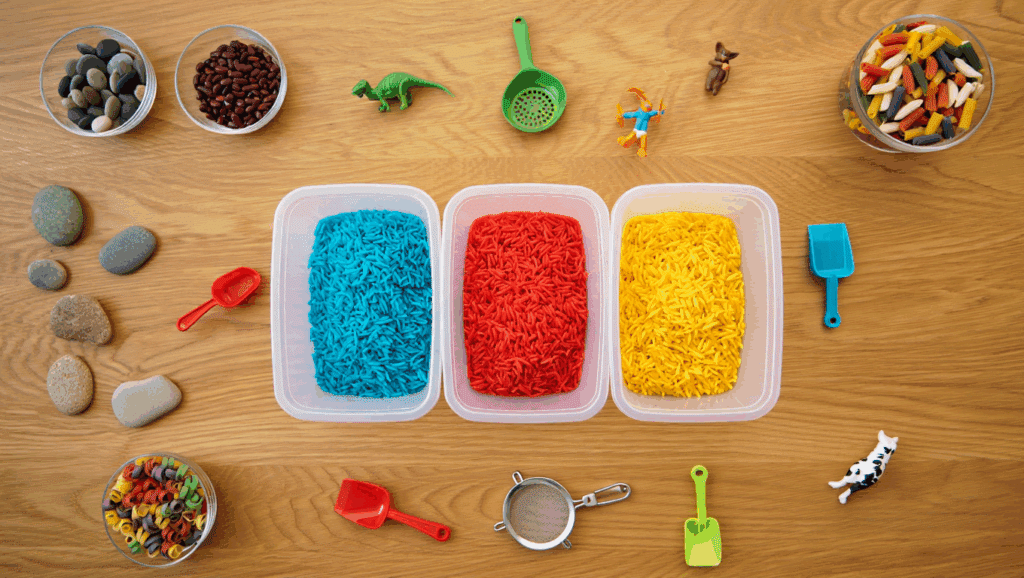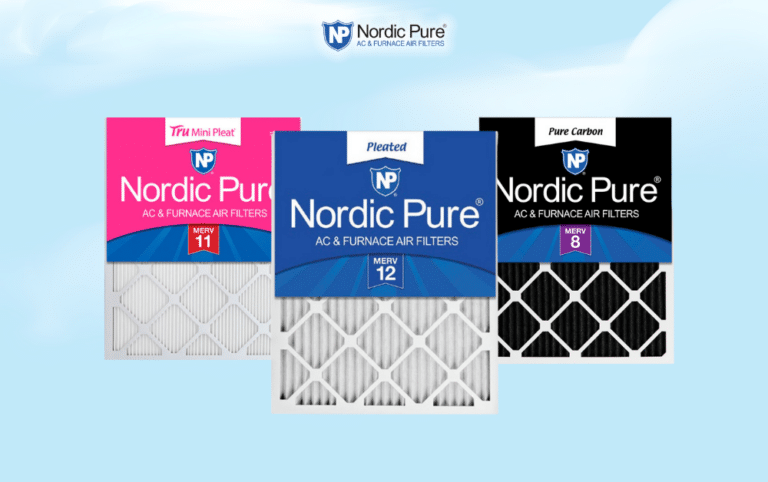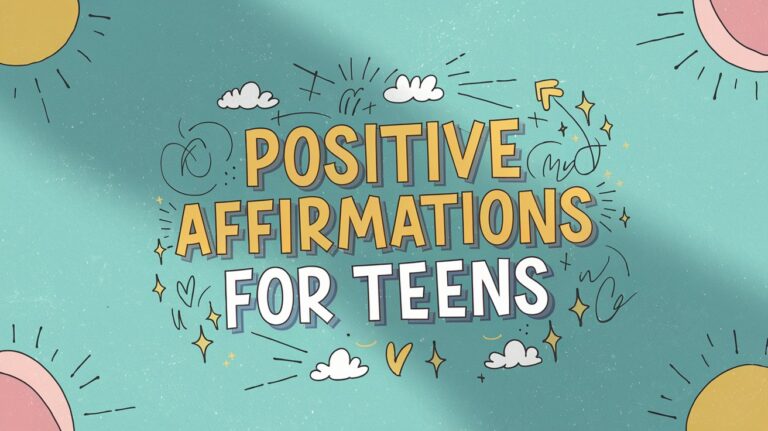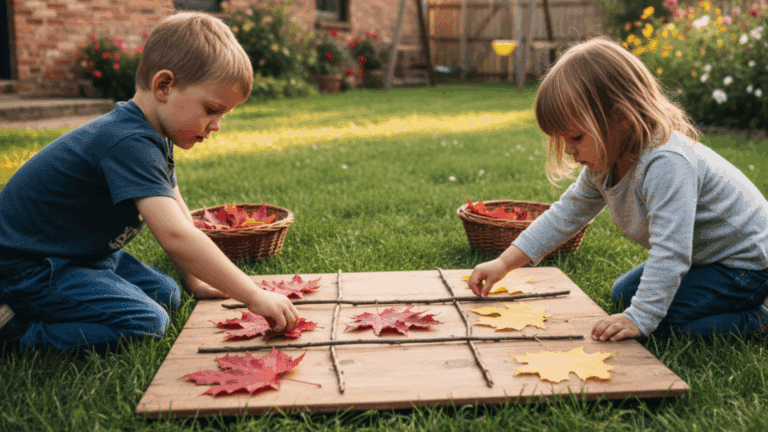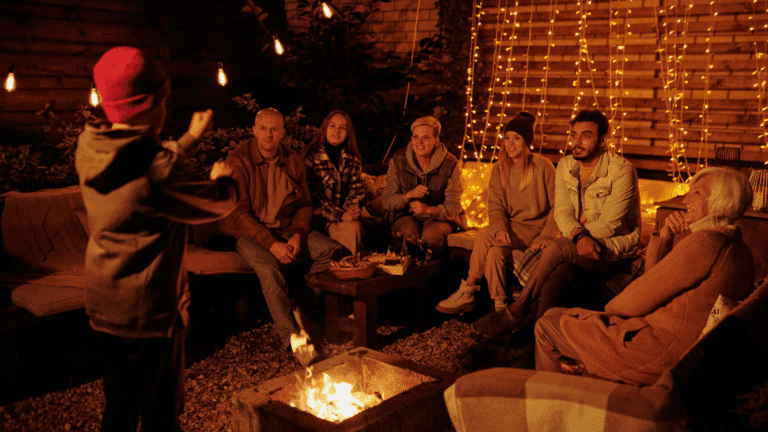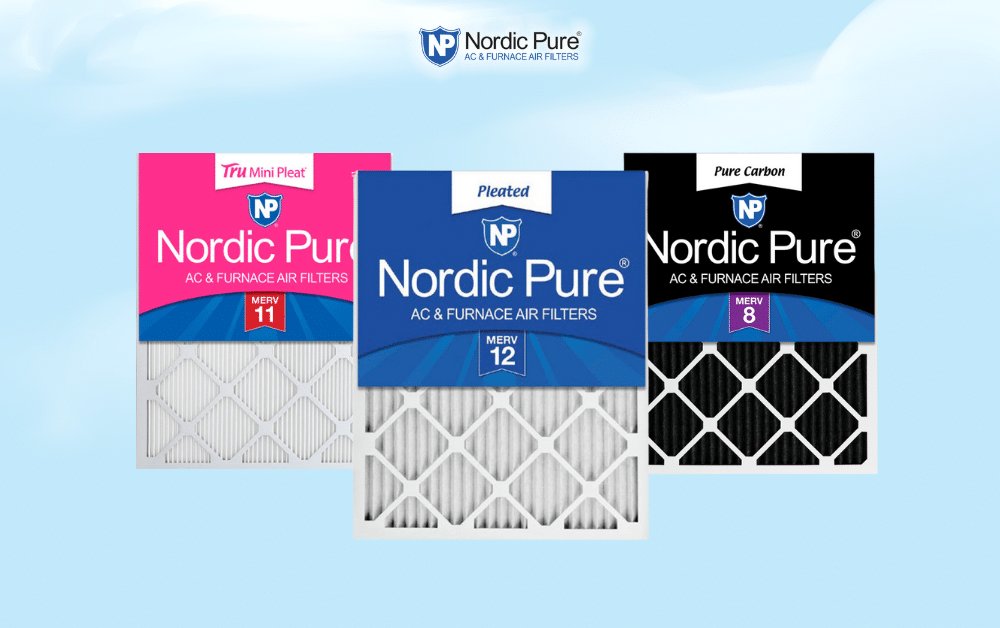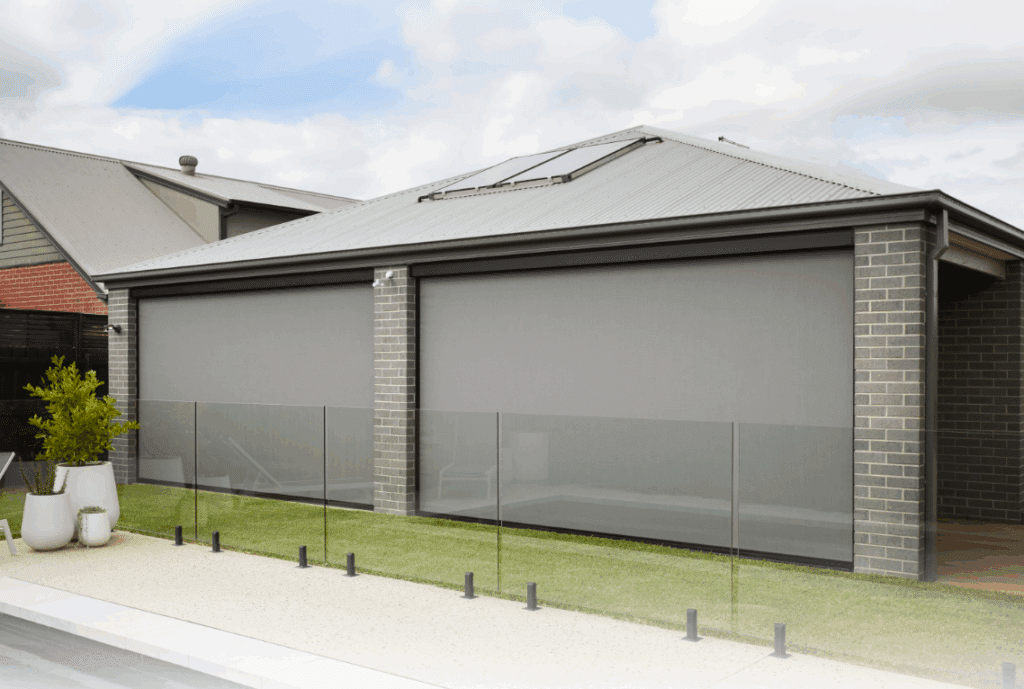Toddlers love mess. But what if that mess could boost their brain development?
Sensory bins changes simple household items into powerful learning experiences that captivate young minds. And they’re easier to set up than you might think!
These sensory bin ideas help children develop fine motor skills, creativity, and problem-solving abilities through hands-on play.
Parents and teachers can create these engaging activities using materials they already have at home. These simple setups make learning both fun and messy!
What are Sensory Bins?
Sensory bins are simple containers filled with materials that children can touch, scoop, and explore. They help kids build cognitive skills by encouraging problem-solving and critical thinking.
Fine motor skills improve as little hands practice grasping, pouring, and manipulating objects. Language development happens naturally when children describe textures, colors, and actions during play.
These bins also support emotional regulation. Children learn to calm themselves through focused, repetitive activities. Independence grows as they make choices about how to play and explore.
Every sensory bin has four basic parts: a container, filler material, small objects to find or sort, and tools for scooping or digging.
Parents can customize bins for any age or learning goal, making them perfect for toddlers and preschoolers alike.
When Should You Introduce Sensory Bins to Your Child?
Many parents wonder when their little ones are ready for sensory play activities. The answer depends on your child’s development stage and ability to follow simple safety rules.
| Age Range | Developmental Signs | Safety Tips |
|---|---|---|
| 12-18 months | Sits independently, picks up small objects, shows curiosity about textures | Constant supervision needed, use large items only, avoid small choking hazards |
| 18-24 months | Walks steadily, follows simple instructions, enjoys filling and dumping | Close supervision, introduce scooping tools, keep materials non-toxic |
| 2-3 years | Talks in short sentences, sorts objects by color/shape, plays independently for short periods | Moderate supervision, can handle smaller items, teach “no eating” rules |
| 3-4 years | Follows multi-step directions, shows self-control, engages in pretend play | Light supervision, introduce themed bins, encourage creative storytelling |
| 4-5 years | Demonstrates patience, handles tools well, enjoys complex activities | Independent play possible, add counting and letter activities, longer play sessions |
Engaging Sensory Bin Ideas to Try Today
These hands-on activities use common household items to create exciting learning experiences. Parents can choose from dry bins for easy cleanup or wet bins for extra sensory fun.
Dry Sensory Bin Ideas
Dry sensory bins offer mess-free fun that’s perfect for indoor play. These six options provide rich textures and learning opportunities without the cleanup worries of water play.
1. Rainbow Rice Treasure Hunt
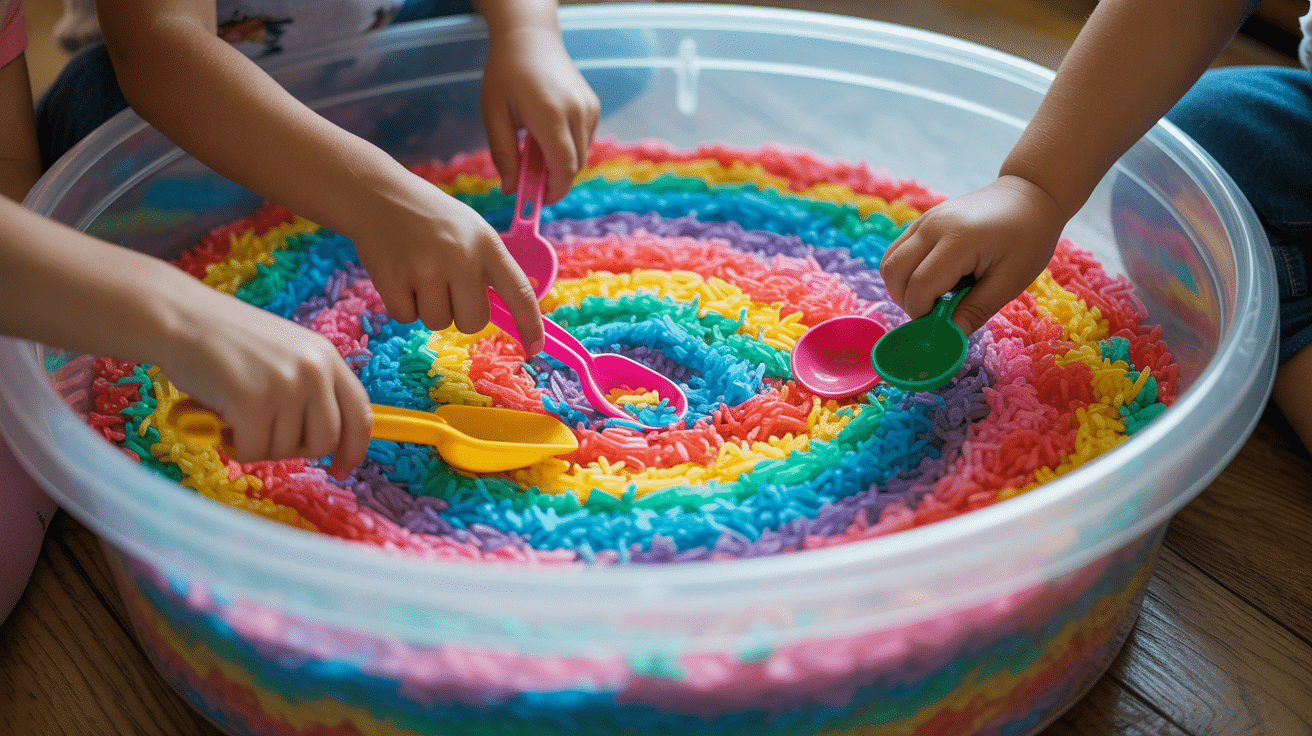
Color white rice with food coloring and let it dry completely. Hide small toys or coins throughout the colored rice.
Children use their hands or small scoops to find the hidden treasures. This activity keeps kids engaged while they search and sort their findings.
Materials Needed:
- White rice (2-3 cups)
- Food coloring (various colors)
- Small toys or alphabet cards
- Large plastic container
- Small scoops or spoons
Skills Boosted: Fine motor development, Color recognition, Hand-eye coordination, Patience and focus
2. Alphabet Pasta Sorting Station
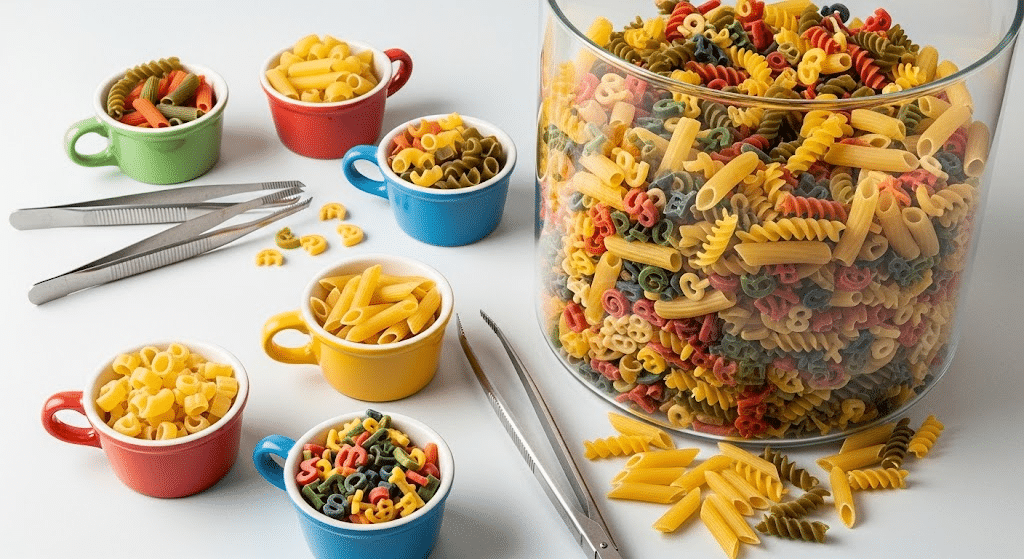
Fill a bin with alphabet pasta shapes and provide small bowls for sorting. Children can sort by letter, color, or simply practice scooping and pouring.
Add letter cards to match pasta shapes with written letters. This turns snack time leftovers into learning fun.
Materials Needed:
- Various pasta shapes (uncooked)
- Small cups or bowls
- Labels or letter cards
- Tweezers or tongs
- Large container
Skills Boosted: Letter recognition, Sorting and classification, Pincer grasp strength, Early literacy skills
3. Pom-Pom Scoop and Sort
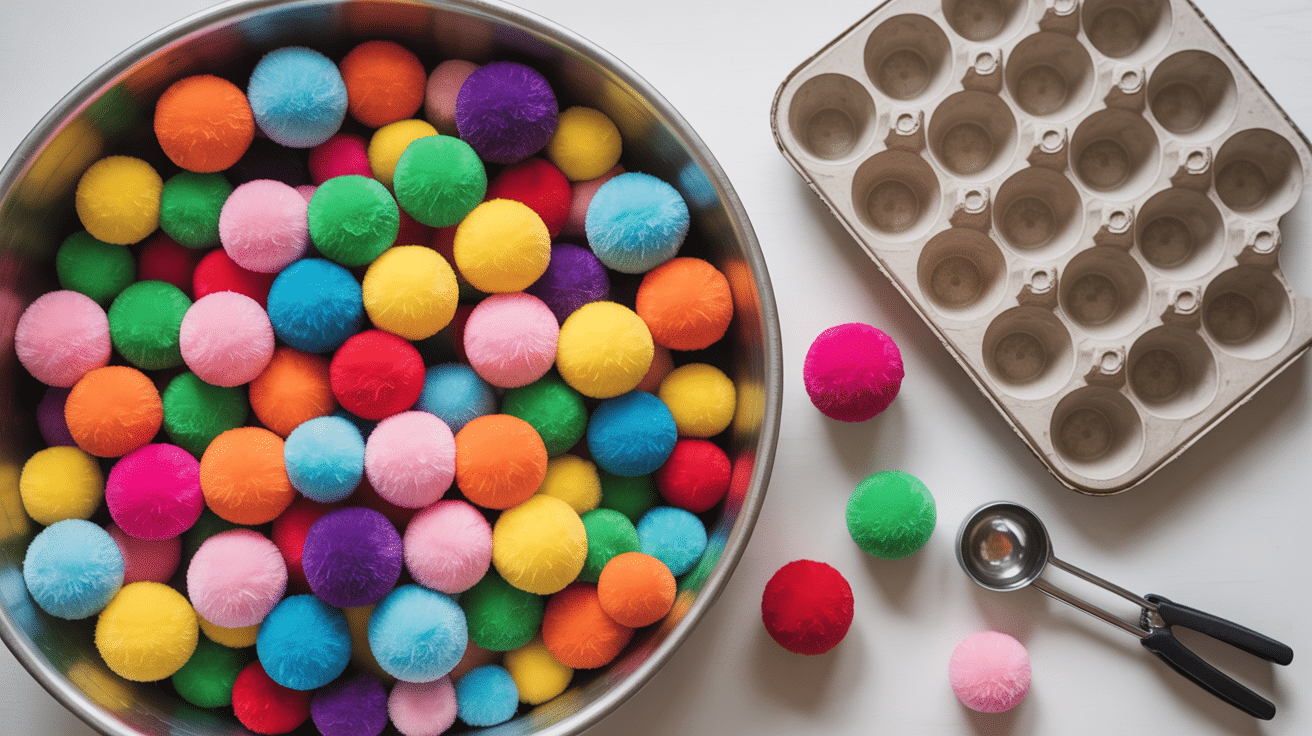
Create a colorful bin filled with different sized pom-poms. Provide various tools like tongs, spoons, and ice cream scoops. Children can sort by color, size, or texture.
Add small containers for sorting and counting activities.
Materials Needed:
- Pom-poms (various sizes and colors)
- Ice cream scoops
- Tongs or tweezers
- Muffin tin or egg carton
- Large shallow container
Skills Boosted: Color sorting, Hand strength, Bilateral coordination, Visual planning
4. Nature Bin with Leaves and Sticks
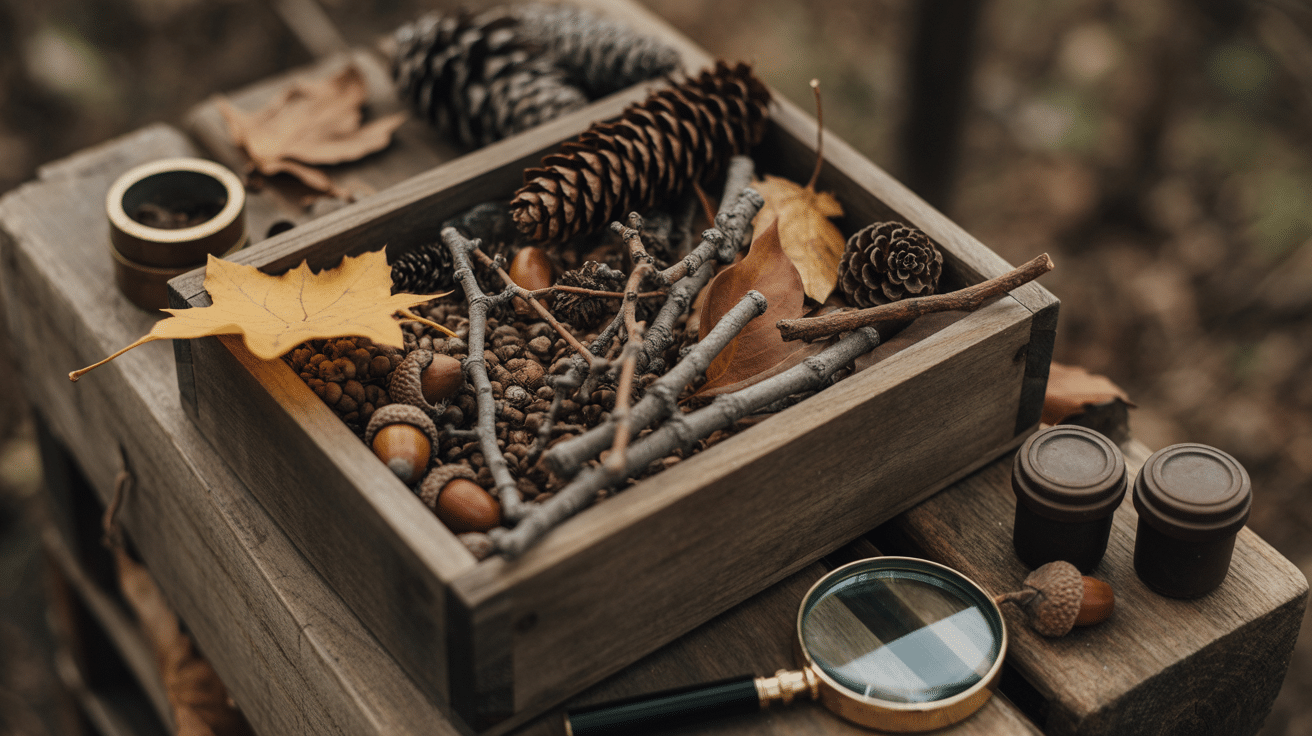
Collect safe outdoor materials like leaves, sticks, pinecones, and smooth stones. Children can sort, stack, and create with natural materials.
This brings outdoor learning inside and connects kids with nature. Always check materials for safety first.
Materials Needed:
- Dried leaves and small sticks
- Pinecones and acorns
- Magnifying glasses
- Small collection containers
- Large wooden box or container
Skills Boosted: Nature appreciation, Scientific observation, Texture recognition, Vocabulary building
5. Construction Zone with Beans and Trucks
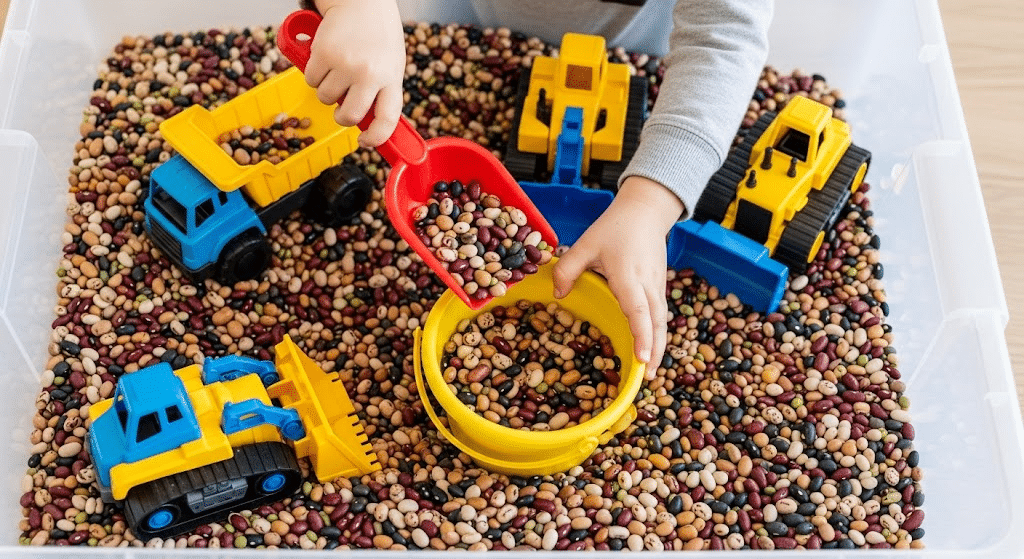
Fill a bin with dried beans and add toy trucks, scoops, and small containers. Children can load trucks, move beans around, and create construction scenes.
The beans provide great sensory feedback while supporting imaginative play.
Materials Needed:
- Dried beans (large varieties)
- Toy trucks and construction vehicles
- Small shovel and bucket
- Hard hat (optional)
- Large container
Skills Boosted: Imaginative play, Gross motor skills, Cause and effect understanding, Social skills (if playing with others)
6. Ice Cream Cone Counting with Cotton Balls
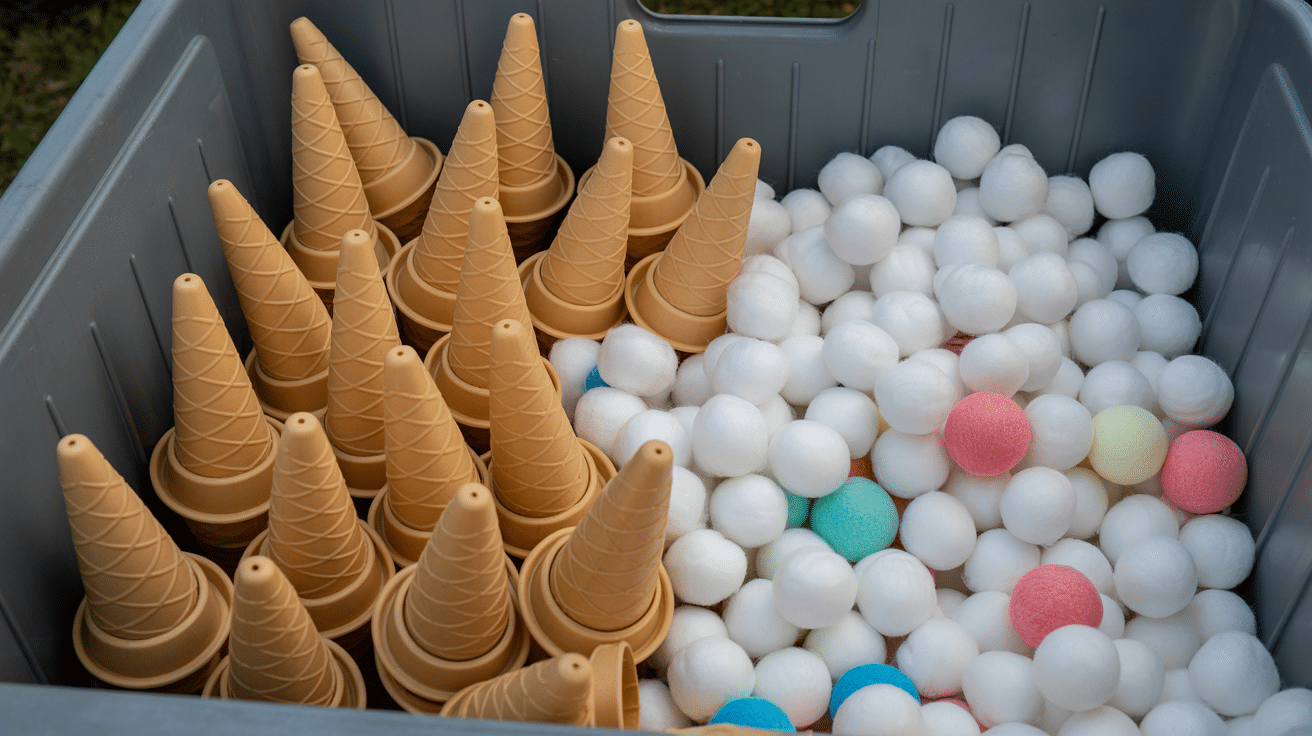
Use plastic ice cream cones and cotton balls to create a pretend ice cream shop. Children can scoop cotton balls into cones and practice counting.
Add number cards to make it a math activity. This combines pretend play with early math skills.
Materials Needed:
- Plastic ice cream cones
- Cotton balls (white and colored)
- Ice cream scoop
- Number cards
- Large container
Skills Boosted: Number recognition, Counting skills, Pretend play, Fine motor precision
Wet Sensory Bin Ideas
Wet sensory bins add splash and excitement to playtime while cooling kids down on warm days. These five water-based activities offer unique textures and sensory experiences that dry bins can’t provide.
7. Ocean Bin with Blue Water and Sea Creatures
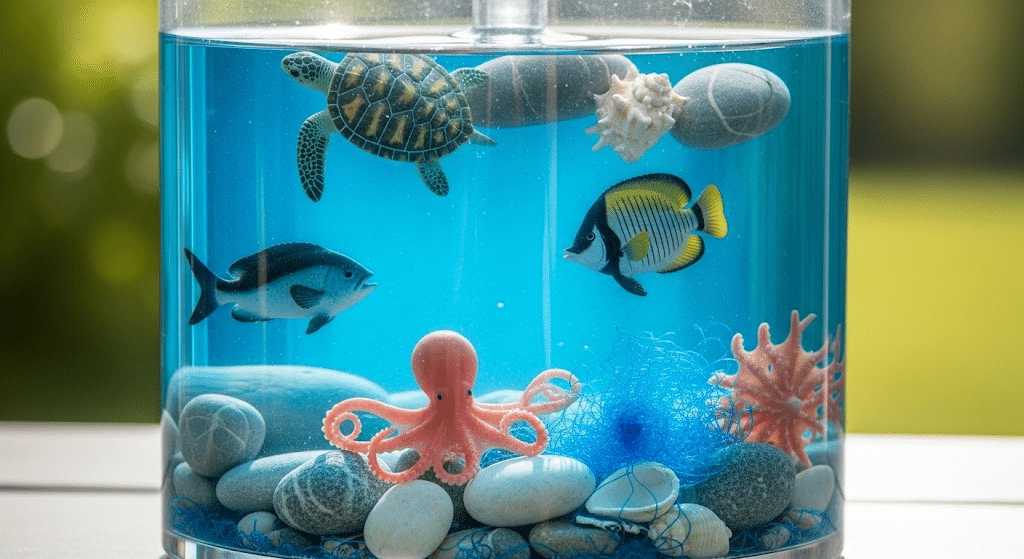
Fill a bin with blue-tinted water and add plastic sea animals. Children can scoop, pour, and create ocean scenes.
Add shells, blue gems, or sand for extra texture. This water play teaches about ocean life while providing sensory input.
Materials Needed:
- Clear container
- Blue food coloring
- Plastic sea animals
- Shells and smooth stones
- Small fishing nets
Skills Boosted: Imaginative play, Hand-eye coordination, Water play confidence, Marine life learning
8. Soap Foam Animal Wash
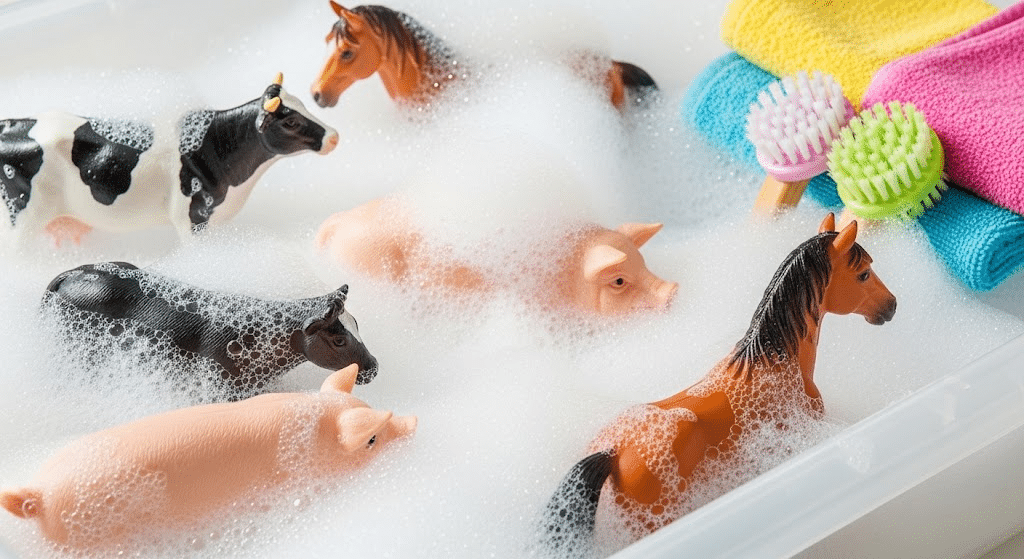
Create thick soap foam and add toy animals that need washing. Children can scrub, rinse, and dry their animal friends.
This teaches responsibility and care while providing rich sensory input. Use tear-free soap for safety.
Materials Needed:
- Liquid soap or shampoo
- Plastic animals
- Small scrub brushes
- Towels for drying
- Warm water
Skills Boosted: Caring and nurturing behavior, Fine motor skills, Following sequences, Responsibility concepts
9. Slippery Spaghetti Color Sort
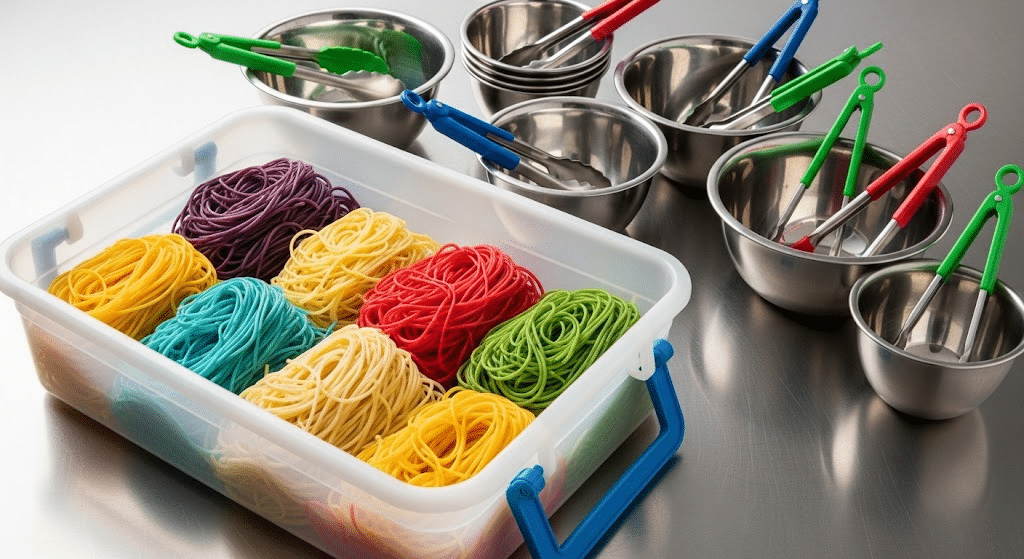
Cook spaghetti and tint with food coloring when cool. Children can sort by color, length, or simply enjoy the unique texture.
This messy activity provides intense sensory input. Always supervise closely during this activity.
Materials Needed:
- Cooked spaghetti
- Food coloring
- Sorting bowls
- Kitchen tongs
- Waterproof container
Skills Boosted: Color recognition, Texture tolerance, Sorting abilities, Tool use practice
10. Pour-and-Fill Water Bin with Funnels
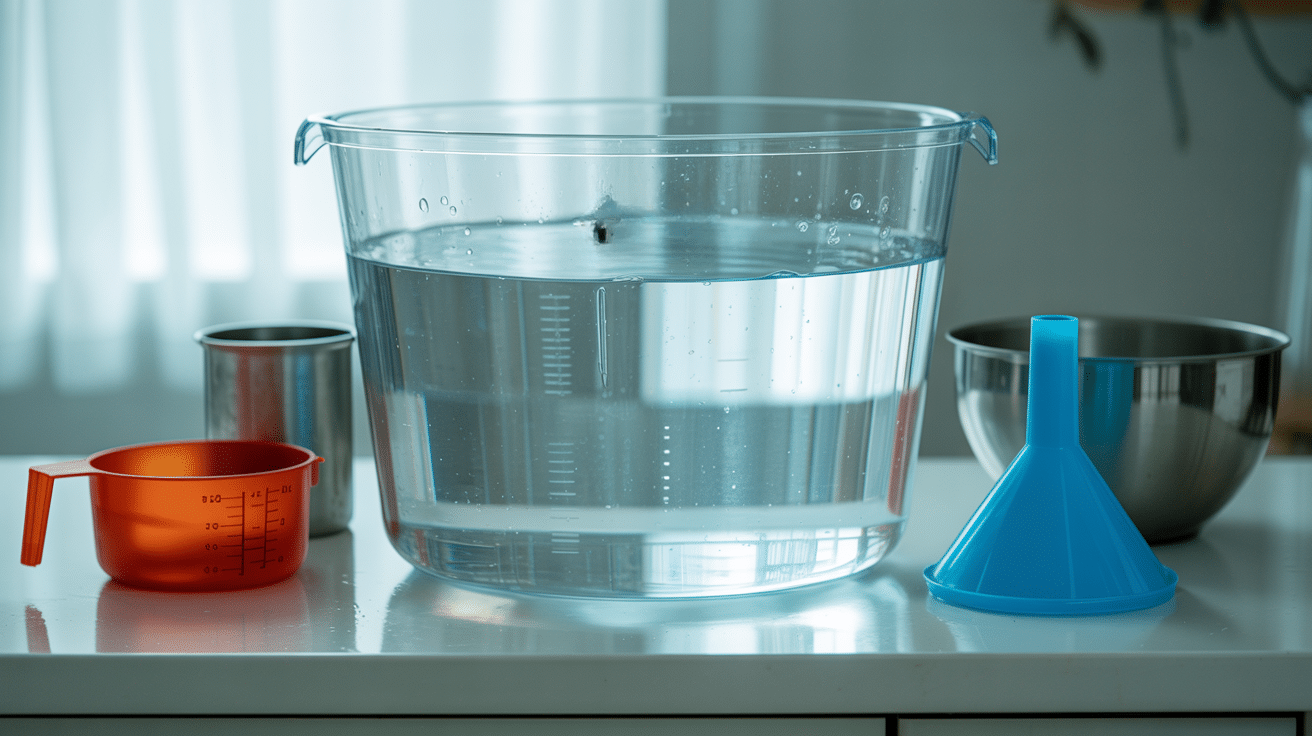
Set up a water bin with various containers, funnels, and tubes. Children can pour, fill, and experiment with water flow.
This teaches cause and effect while building math concepts. Use warm water for comfort.
Materials Needed:
- Water
- Various sized containers
- Funnels
- Measuring cups
- Waterproof table covering
Skills Boosted: Math concepts (volume, measurement), Hand-eye coordination, Scientific thinking, Cause and effect learning
11. Gelatin Rescue Mission with Toys
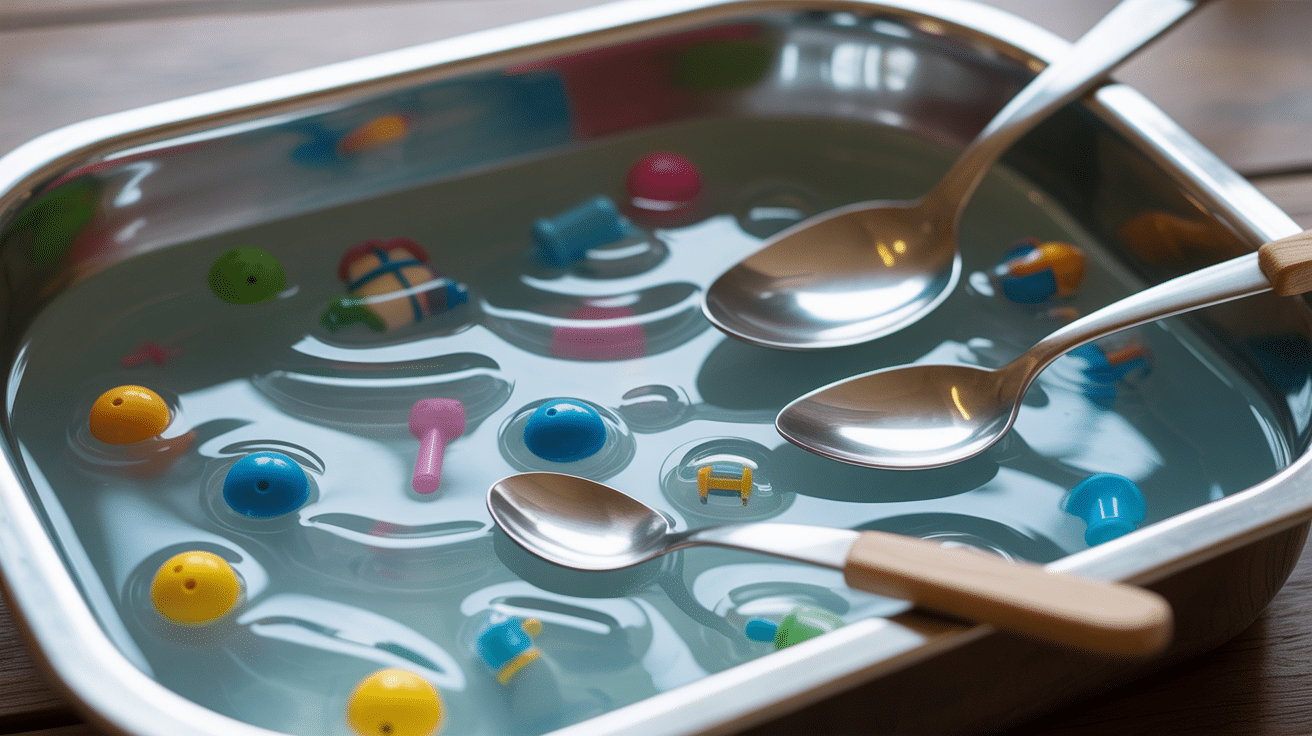
Make colored gelatin and hide small toys inside before it sets. Children can dig, squish, and rescue their toys from the jiggly gelatin.
This provides unique sensory input while creating excitement. Use sugar-free gelatin for safety.
Materials Needed:
- Clear gelatin mix
- Small waterproof toys
- Spoons and small tools
- Shallow container
- Warm water for cleanup
Skills Boosted: Problem-solving, Persistence, Texture exploration, Fine motor strength
How Sensory Bins Reinforce Learning Through Repetition
When children return to the same sensory bin repeatedly, they strengthen brain connections. Each time they scoop, pour, or sort, they build neural pathways that support future learning.
Think of it like walking the same trail, the more often they use it, the clearer the path becomes.
Building Skills Through Practice
Repeated sensory play brings multiple benefits. Children develop richer vocabulary as they describe textures and actions. Their focus improves from five-minute sessions to twenty-minute play periods.
They also become more independent, creating their own games and challenges.
Early Academic Connections
Sensory bins connect directly to literacy and math skills. Tracing letters in rice helps children recognize letter shapes later. The finger strength from scooping helps them hold pencils.
Math concepts like counting, sorting, and comparing quantities become natural through hands-on play.
Why Repetition Matters
Children need multiple experiences with the same materials to fully learn from them. Each play session brings new discoveries and different approaches.
This repeated exposure helps them master skills and build confidence in their abilities.
Conclusion
These sensory bin ideas offer simple ways to support your child’s development through play.
But the real magic happens when you follow your child’s interests. Does your toddler love cars? Add them to a bean bin. Is your preschooler fascinated by letters? Create an alphabet rice hunt.
The best sensory bins come from watching what excites your child. You don’t need expensive materials or perfect setups.
Ready to get started? Download our free sensory bin planner to track your child’s favorite activities and plan new ones based on their interests.
Let their wonder guide your next creation!


